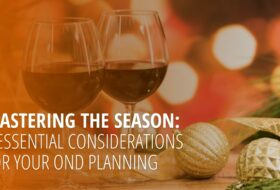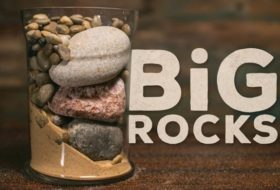Are we not all wondering: “When is this going to end? When can we get back to ‘normal’?”
While we hunker down and do what we can to survive – both personally and professionally – during this crisis, we can’t help but hope for a brighter future…sooner rather than later. But what does that future look like? And, what are we doing now to prepare for it?
Since the tasting rooms have been temporarily closed and beginning to open in different regions across the country, we need to consider what the new normal is going to look like for our brands. While we navigate through survival mode, we’ll need to also be looking to the future and creating strategies for after the crisis.
To summarize the state of the world, here is an excerpt from an article in the New York Times on how a few European countries are going about restarting their economies. Their conclusion:
“The next phase is not a return to normality. It is learning how to live with the pandemic — possibly for quite a long time… The gradual acceleration of economic activity is accompanied by strict new rules requiring people to cover their nose and mouth in shops and on public transport — and many more months of strict social distancing.”
Post-Crisis Strategy
What should we be thinking about, preparing for? Beyond ensuring compliance with the government protocols that are being put in place for safety (check with your local wine association and county for protocols/guidelines for wineries), here are some things to consider as we reopen and embark on the new normal:
-
Communicate clearly with our employees and customers.
As our business prepares for the new normal, it is vital that we communicate clearly and in a timely manner to both our customers and employees. What are we doing? How are we doing it? What do they need to know to feel comfortable to come back to our winery? If we don’t know the answer to some questions, an honest “We will weather this together” can go a long way – and certainly farther than saying nothing at all. And, it may not look the same from winery to winery. Consider on-site, post-arrival communication regarding protocols as a way to engender customer peace of mind and to manage expectations.
-
Marketing campaigns, communications and strategies ready to go.
Timing is everything and we will need to reintroduce ourselves – to some extent – to the marketplace and consumers. Consider: Are you open different hours? Offering different (or the same) experiences? Any changes that would affect either your staff or your customers? Be ready to launch your communications strategy. Planning after the crisis passes is too late.
-
Assess your inventory.
What do we need to operate our business when it reopens? Who are our suppliers? Will they be able to replenish our stock, or are they potentially unable to do so because of isolation/closure of business? On the contrary, did we end up with a surplus of inventory? Are there creative solutions we can take here? How will we communicate these supply-chain issues to our organization and customers? Are there new supplies we’ll need to order?
-
Adjust your goal.
Beyond preparing for the worst and hoping for the best, let’s re-do our projections now and every week. Everything has changed and continues to change, especially our revenue assumptions, so we’ll need to develop new assumptions. Seek flexibility. Do 13-week forecasts and update them every week. Ecommerce up last month, flat this month? Phone revenue increasing or flat? As many regions have seen from other regional crises like fires, earthquakes, and more, it takes some time before traffic picks up in our tasting rooms. Whether we expect a slow start or an opening of the flood gates, we need to plan for it now.
-
Preparing for unknowns.
There are many unknowns in this. Capacity – what numbers will we be allowed to see given our space? Demand – how many will actually come through the doors? We’ll need to not only adjust our goals but also our labor, expectations, and the way we do business. We’ll need to consider how to manage attrition; with lack of travel, there will not be enough new population coming to make up for the cancellations of current members. Every guest opportunity is even more crucial, but in a hospitality-driven way so that sales come through superb service.
-
Identify scenarios, points of failure, and other risks.
Currently, all of us are scrambling to get off defense. In order to get back on the offense, we’ll need to have a good playbook with a variety of plays for any given situation. What are our worst- and best-case scenarios? What is the game plan for the short term and the long term? What worked? What didn’t? Should we continue offering virtual tastings or experiences? Curbside pickups? What are the pros and cons for these initiatives to continue… or not? For both the business and our customers. Test, modify, adapt, and try again. Just about any action is better than inaction. Get perspective from all points of view – the staff, our members, our guests. Maintain the span of control, but don’t operate in a vacuum. Aim small, miss small, test, see what sticks, and go do more of that.
-
Look for emerging business opportunities and trends.
Look for new opportunities that we can achieve with minimum cost. What trends evolved from this crisis that make sense to continue beyond into the new normal? What worked for our business strategy that we can continue? What could work with some adjustments? What is working in other industries that we can apply? Virtual tastings and virtual offerings are emerging as the winner in new trends – we’ll need to measure the metrics of our efforts. This will be our 6th DTC channel – tasting room, club, phone, ecommerce, events, and now virtual.
-
The scale of this crisis is creating a shift in the preferences and expectations of individuals as employees, and as consumers.
Brands that reinvent themselves to make the most of better insight and foresight, as preferences evolve, will disproportionally succeed. We need to consider what our customer needs are now, if different from pre-covid19 and reimagine ways to sustainably provide for these needs. As we re-open tasting rooms, are we incorporating social distancing, health protocols such as wearing masks (and protocols that need to be addressed from the parking lot to the bathrooms to the glassware and more…) with our experiences for early roll out? Are we considering how things will be impacted or changed with our ‘normal’ experiences for the new normal? Adapt (and promote) safety protocols and train against them. We’ll need to reimagine how we are selling wine and focus that outside our four walls (digitally, phone, leveraging winemaker/spokesperson travel to engage consumers, etc.).
-
Celebrate the survival and all the small wins.
There’s no dispute that every crisis takes a toll. Don’t have survivors’ guilt, celebrate that we are all survivors. Crisis bonds people together; it shows us what we are made of and gives us confidence to face the next crisis. That kind of self-learning transforms people—and people transform their companies.
-
Above all else, embrace compassion.
Vendors may be working with limited staff, employees are stressed with the uncertainty of the future, and members may be laid off or worse. Crisis calls for us to manage beyond the policy, and allows us to show those that are critical to our success they are not numbers or commodities, but truly valued relationships.
Speed is of the essence. We will all need to move fast, but safely. The next few weeks and months will shape the future of our businesses—and our industry.




